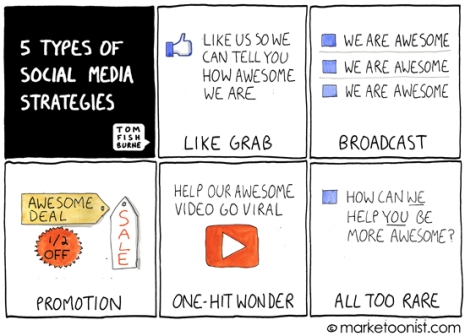We have talked about creating personas in a previous post.
Personas are a good way to prevent making the dreaded ego-driven website – a website that you love, but that does nothing for your customer. Personas are stand-ins for the main users of your product.
I was inspired by an article by Bryan Eisenberg, “Content Marketing Personas,” and I wanted to share some of his thoughts with you as we expand the discussion on putting yourself into the shoes of your average customers.
It is hard sometimes to look beyond what you think is the best way to design a website or to run a Facebook page. That is why so many projects fall prey to the personal preferences of the boss or are “committeed” to death.
Ask yourself the hard questions
Once you have created your personas, you need to evaluate your websites and social media outlets and ask some questions. I will quote Eisenberg directly here:
“Ask yourself and be honest:
- How is this ad/landing page/blog post/tweet relevant to this persona? What does this term mean specifically for them?
- How have you framed why they should buy from you and what value do you bring to this persona to solve their specific needs and problems?
- How have you helped this persona decide what action they need to take and how have you given them the confidence to take that action?”
This is the time when you have to fight for the users. What the customer likes is what matters – not what you like or what your boss likes. It is up to you to find out what that is. Careful research into keywords and web analytics will give you insight into who is coming to your site and what they are looking for.
What about your Facebook page? Is it engaging customers? Are you paying attention to what they do and don’t like? Have you looked at Facebook Insights to see the demographics of your fans?
It takes a little homework, more than saying “I like this website, so it is good.” However, personas can make a little work go a long way.


















